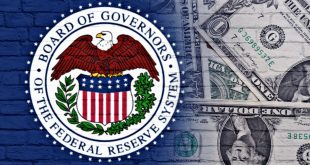In an interview conducted by Alarabiya Television, Mohamed Hashad, Head of Research and Development at Noor Capital and a member of the American Association of Technical Analysts, commented and analyzed the performance of the U.S. labour market, inflation, and the potential future moves of the Federal Reserve.
Are Markets Focusing More on Unemployment Data Than Inflation Figures?
Lately, the market’s reaction seems rather muted, as we’ve observed a growing focus on the labour market. This is mainly due to the Federal Reserve shifting its attention from inflation to employment trends. This was particularly evident in early October when U.S. jobs data was released, showing that the economy had added 254,000 jobs. Even though inflation data was eagerly anticipated, it didn’t prompt significant market movements. Inflation has been slowing, but not as quickly as expected, with the annual Consumer Price Index (CPI) rising 2.4%, higher than the forecasted 2.3% but lower than September’s 2.5%.
Unemployment Figures and Temporary Factors
It’s essential to put this data in context. While unemployment claims came in higher than anticipated, this coincides with a drop in the overall unemployment rate to 4.1%. Single-week unemployment data may not provide a full market picture, especially given the impact of temporary events like the recent hurricane. For instance, JPMorgan estimates that the hurricane could eliminate around 120,000 jobs, potentially skewing unemployment data not just this week but in the near term.
Federal Reserve Chair Jerome Powell has emphasized that one month’s unemployment data is not enough to make sweeping judgments. Furthermore, the U.S. labour market remains strong, as reflected by the latest jobs data and wage growth figures.
Expectations for Interest Rate Cuts: Is 25 Basis Points a Given?
The current economic data points towards a likely 25 basis point rate cut. In my opinion, inflation is steadily responding to the Fed’s measures, and it’s nearing the sustainable 2% target. There’s no need for a more aggressive 50 basis point cut unless the economy worsens significantly. The Fed is unlikely to sacrifice economic stability or the robustness of the labour market. By limiting the cut to 25 basis points, the Fed avoids unsettling the markets. A more significant cut could reignite inflationary risks soon, so I expect a more conservative approach.
Impact on the Dollar and Future Movements
The U.S. dollar continues to weaken amid expectations of lower interest rates. The Fed’s last meeting marked its first rate cut in four years, signalling a shift in monetary policy. I expect the dollar to face further declines in the coming periods. However, geopolitical tensions could offer the dollar some support as it remains a safe-haven currency. Despite this, the broader trend for the dollar index against a basket of currencies will likely be downward.
Commodities: Gold and Oil’s Recent Rebound
We’ve seen a slight rebound in gold and oil prices following significant losses in the previous sessions. Gold, in particular, hit $2,605 per ounce yesterday, marking its longest streak of daily losses since October. Today, it showed some recovery. The metal is benefiting from escalating geopolitical tensions in the Middle East, as it is a prime safe-haven asset during times of market uncertainty. Additionally, recent statements from Federal Reserve officials suggest growing confidence that inflation is nearing its target, which could prolong the rate-cutting cycle. This, in turn, negatively affects the dollar and supports gold, which is priced in the U.S. currency.
Looking Ahead to the ECB’s Decision and German CPI Data
Tomorrow, all eyes will be on Germany’s CPI data, which could influence the European Central Bank’s (ECB) upcoming decision on October 17. Given the current economic landscape, I expect the ECB to continue cutting interest rates. The two largest economies in the Eurozone, Germany and France, have been underperforming, with negative data weighing the overall outlook.
Will the ECB Take a Conservative Stance?
The next rate cut from the ECB will likely be a more conservative 25 basis points. Historically, the ECB has taken a more cautious approach compared to the Federal Reserve, and I expect this trend to continue.
 Noor Trends News, Technical Analysis, Educational Tools and Recommendations
Noor Trends News, Technical Analysis, Educational Tools and Recommendations




